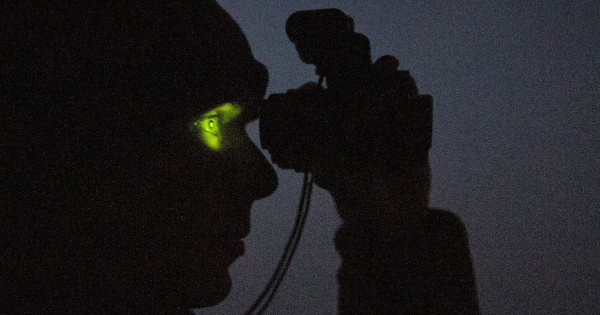Forget bulky goggles: these scientists want to inject night vision straight into troops’ eyeballs
The U.S. military may be working overtime to reduce the weight of a standard-issue pair of night vision googles to the point where it feels like you're wearing nothing at all, but a group of scientists think they've cracked the code of "built-in" night vision thanks to dollop of special particles and a needle to the eyeball

The U.S. military may be working overtime to reduce the weight of a standard-issue pair of night vision googles to the point where it feels like you're wearing nothing at all, but a group of scientists think they've cracked the code of “built-in” night vision thanks to dollop of special particles and a needle to the eyeball.
A group of researchers attending the American Chemical Society's national meeting in San Diego, California this month plan on presenting a method for using ultra-small nanoparticles, injected into the eye, to imbue a subject with the ability to see near-infrared light, according to an August press release.
“When we look at the universe, we see only visible light,” Massachusetts Medical School nanoparticle expert and the the project's principal investigator, Gang Han said in the release. “But if we had near-infrared vision, we could see the universe in a whole new way. We might be able to do infrared astronomy with the naked eye, or have night vision without bulky equipment.”
According to Popular Science, human vision usually operates within wavelengths between 380 to 700 nanometers. But in February, a paper authored Gang and fellow researchers at the University of Science and Technology of China described how they injected special “”ocular injectable photoreceptor-binding upconversion” nanoparticles that absorb infrared light and produce visible (and therefore perceivable) light into the retinas of lab rats.
The result? The nanoparticles basically created “thousands of tiny infrared goggles inside the rodents' eyes,” as The Atlantic artfully explained at the time. “With their technologically augmented retinas, the mice could respond to infrared light that would otherwise have been invisible to them.”
VIDEO: UMMS scientists develop technology to give night vision to mammals
This is obviously has fascinating applications beyond combat: As one expert told Stars and Stripes, the temporary nature of the treatment presents less of a risk to the average warfighter than permanent augmentations, and various nanoparticle designs could enable customs officials to detect “smuggled radioactive materials” by eyeball alone.
But despite these applications, it's still a fucking needle to the eye. Am I the only person who actually learned anything from one of the greatest naval minds of the 24th century and his never-ending struggle against his bionic white whale?
No fucking THANK you.
Look, the Army's new Enhanced Night Vision Goggles (ENVG-III) are finally rolling out to soldiers after years in the works, and they only weigh two pounds tops. Call me a traditionalist, but I would much prefer an external headset to getting bunch of shit jammed in my eye — or at least some badass contact lenses.
